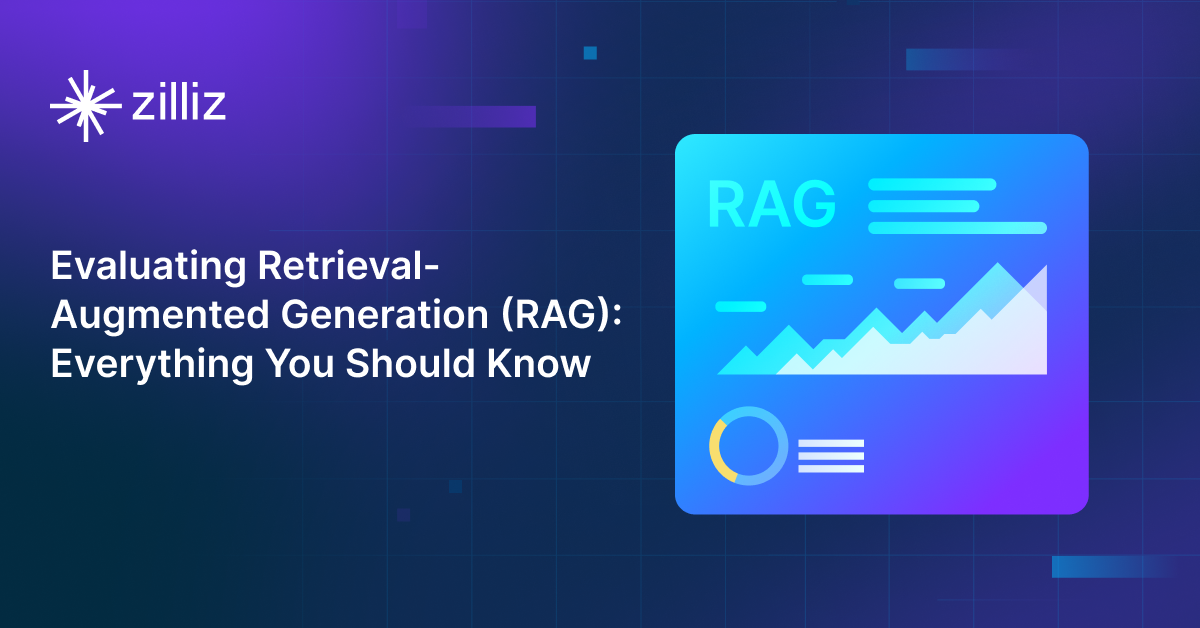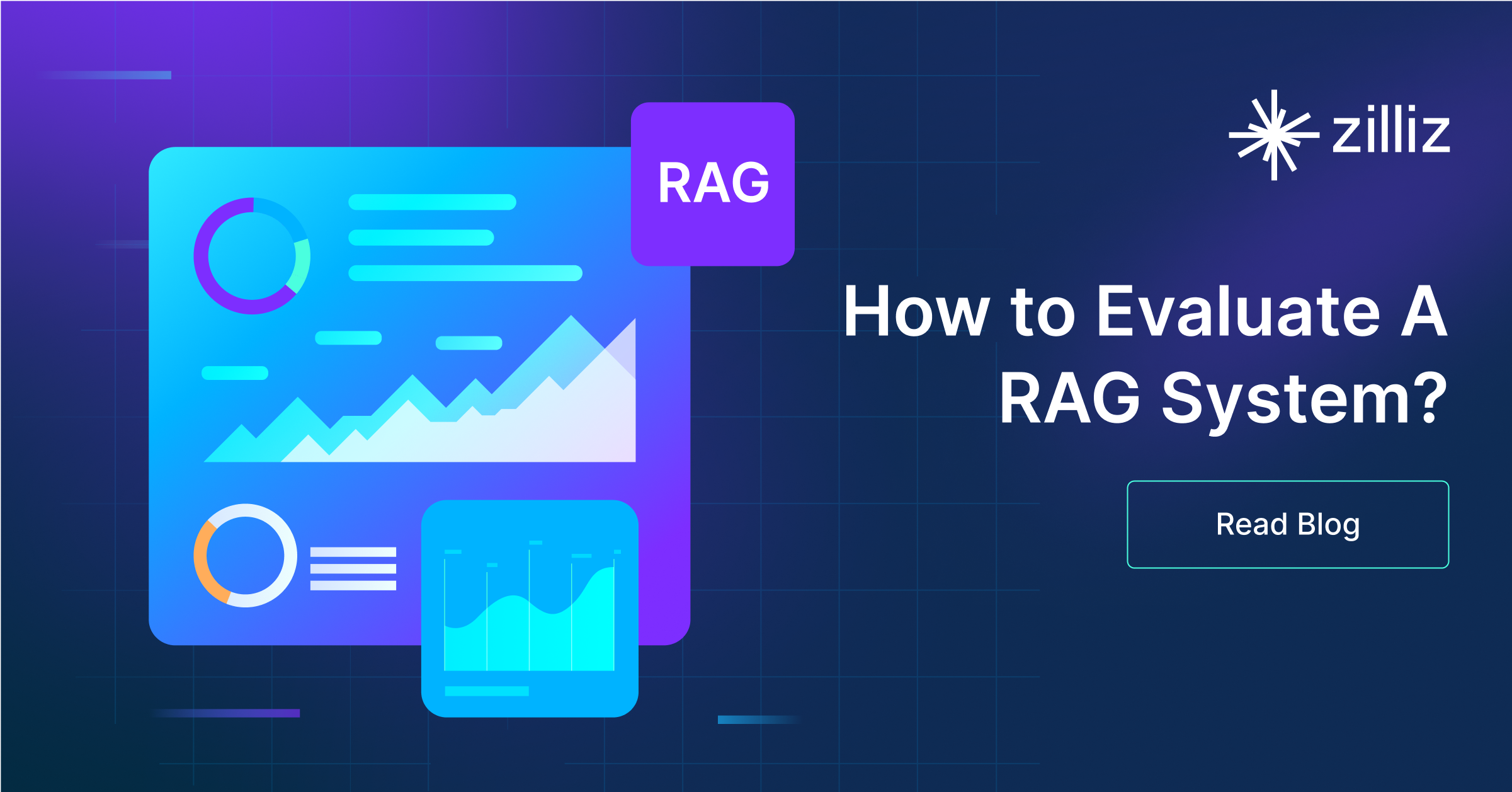Build RAG Chatbot with Llamaindex, HNSWlib, Mistral Codestral Mamba, and HuggingFace all-MiniLM-L12-v1
Introduction to RAG
Retrieval-Augmented Generation (RAG) is a game-changer for GenAI applications, especially in conversational AI. It combines the power of pre-trained large language models (LLMs) like OpenAI’s GPT with external knowledge sources stored in vector databases such as Milvus and Zilliz Cloud, allowing for more accurate, contextually relevant, and up-to-date response generation. A RAG pipeline usually consists of four basic components: a vector database, an embedding model, an LLM, and a framework.
Key Components We'll Use for This RAG Chatbot
This tutorial shows you how to build a simple RAG chatbot in Python using the following components:
- Llamaindex: a data framework that connects large language models (LLMs) with various data sources, enabling efficient retrieval-augmented generation (RAG). It helps structure, index, and query private or external data, optimizing LLM applications for search, chatbots, and analytics.
- HNSWlib: a high-performance C++ and Python library for approximate nearest neighbor (ANN) search using the Hierarchical Navigable Small World (HNSW) algorithm. It provides fast, scalable, and efficient similarity search in high-dimensional spaces, making it ideal for vector databases and AI applications.
- Mistral Codestral Mamba: A code-focused AI model designed to streamline software development by generating, analyzing, and optimizing code. Leveraging the Mamba architecture, it excels at processing long sequences efficiently, offering fast inference and precise code suggestions. Ideal for developers seeking productivity gains in code completion, debugging, and automation tasks.
- HuggingFace all-MiniLM-L12-v1: A compact sentence embedding model designed to convert text into dense vector representations for semantic understanding. It balances speed and efficiency with strong performance in tasks like semantic search, text clustering, and retrieval-augmented generation. Ideal for applications requiring low-latency inference or resource-constrained environments while maintaining robust semantic analysis capabilities.
By the end of this tutorial, you’ll have a functional chatbot capable of answering questions based on a custom knowledge base.
Note: Since we may use proprietary models in our tutorials, make sure you have the required API key beforehand.
Step 1: Install and Set Up Llamaindex
pip install llama-index
Step 2: Install and Set Up Mistral Codestral Mamba
%pip install llama-index-llms-mistralai
from llama_index.llms.mistralai import MistralAI
llm = MistralAI(model="open-codestral-mamba")
Step 3: Install and Set Up HuggingFace all-MiniLM-L12-v1
%pip install llama-index-embeddings-huggingface
from llama_index.embeddings.huggingface import HuggingFaceEmbedding
embed_model = HuggingFaceEmbedding(model_name="BAAI/bge-small-en-v1.5")
Step 4: Install and Set Up HNSWlib
%pip install llama-index-vector-stores-hnswlib
from llama_index.vector_stores.hnswlib import HnswlibVectorStore
from llama_index.core import (
VectorStoreIndex,
StorageContext,
SimpleDirectoryReader,
)
vector_store = HnswlibVectorStore.from_params(
space="ip",
dimension=embed_model._model.get_sentence_embedding_dimension(),
max_elements=1000,
)
Step 5: Build a RAG Chatbot
Now that you’ve set up all components, let’s start to build a simple chatbot. We’ll use the Milvus introduction doc as a private knowledge base. You can replace it with your own dataset to customize your RAG chatbot.
import requests
from llama_index.core import SimpleDirectoryReader
# load documents
url = 'https://raw.githubusercontent.com/milvus-io/milvus-docs/refs/heads/v2.5.x/site/en/about/overview.md'
example_file = 'example_file.md' # You can replace it with your own file paths.
response = requests.get(url)
with open(example_file, 'wb') as f:
f.write(response.content)
documents = SimpleDirectoryReader(
input_files=[example_file]
).load_data()
print("Document ID:", documents[0].doc_id)
storage_context = StorageContext.from_defaults(vector_store=vector_store)
index = VectorStoreIndex.from_documents(
documents, storage_context=storage_context, embed_model=embed_model
)
query_engine = index.as_query_engine(llm=llm)
res = query_engine.query("What is Milvus?") # You can replace it with your own question.
print(res)
Example output
Milvus is a high-performance, highly scalable vector database designed to operate efficiently across various environments, from personal laptops to large-scale distributed systems. It is available as both open-source software and a cloud service. Milvus excels in managing unstructured data by converting it into numerical vectors through embeddings, which facilitates fast and scalable searches and analytics. The database supports a wide range of data types and offers robust data modeling capabilities, allowing users to organize their data effectively. Additionally, Milvus provides multiple deployment options, including a lightweight version for quick prototyping and a distributed version for handling massive data scales.
Optimization Tips
As you build your RAG system, optimization is key to ensuring peak performance and efficiency. While setting up the components is an essential first step, fine-tuning each one will help you create a solution that works even better and scales seamlessly. In this section, we’ll share some practical tips for optimizing all these components, giving you the edge to build smarter, faster, and more responsive RAG applications.
LlamaIndex optimization tips
To optimize LlamaIndex for a Retrieval-Augmented Generation (RAG) setup, structure your data efficiently using hierarchical indices like tree-based or keyword-table indices for faster retrieval. Use embeddings that align with your use case to improve search relevance. Fine-tune chunk sizes to balance context length and retrieval precision. Enable caching for frequently accessed queries to enhance performance. Optimize metadata filtering to reduce unnecessary search space and improve speed. If using vector databases, ensure indexing strategies align with your query patterns. Implement async processing to handle large-scale document ingestion efficiently. Regularly monitor query performance and adjust indexing parameters as needed for optimal results.
HNSWlib optimization tips
To optimize HNSWlib for a Retrieval-Augmented Generation (RAG) setup, fine-tune the M parameter (number of connections per node) to balance accuracy and memory usage—higher values improve recall but increase indexing time. Adjust ef_construction (search depth during indexing) to enhance retrieval quality. During queries, set ef_search dynamically based on latency vs. accuracy trade-offs. Use multi-threading for faster indexing and querying. Ensure vectors are properly normalized for consistent similarity comparisons. If working with large datasets, periodically rebuild the index to maintain efficiency. Store the index on disk and load it efficiently for persistence in production environments. Monitor query performance and tweak parameters to achieve optimal speed-recall balance.
Mistral Codestral Mamba optimization tips
Optimize Mistral Codestral Mamba in RAG by fine-tuning on domain-specific data to align outputs with context, adjusting temperature (lower for precision, higher for creativity), and trimming retrieved documents to relevant chunks to reduce noise. Use quantization for faster inference, enable dynamic batching, and limit max tokens to prevent overlong responses. Cache frequent queries, precompute embeddings for common contexts, and leverage hardware acceleration (e.g., CUDA cores). Monitor latency and accuracy to balance speed and quality, and apply prompt engineering with clear instructions to guide context integration.
HuggingFace all-MiniLM-L12-v1 optimization tips
To optimize the all-MiniLM-L12-v1 model in a RAG setup: preprocess input data by cleaning and normalizing text (lowercasing, removing special characters) to improve embedding quality. Use batch inference for embedding generation to maximize GPU utilization. Fine-tune the model on domain-specific data via contrastive learning to enhance retrieval relevance. Reduce vector dimensionality via PCA if storage or latency is critical. Cache frequently accessed embeddings to minimize recomputation. Quantize the model with Hugging Face’s transformers library for faster inference with minimal accuracy loss. Regularly benchmark performance against your retrieval metrics (e.g., recall@k) to validate optimizations.
By implementing these tips across your components, you'll be able to enhance the performance and functionality of your RAG system, ensuring it’s optimized for both speed and accuracy. Keep testing, iterating, and refining your setup to stay ahead in the ever-evolving world of AI development.
RAG Cost Calculator: A Free Tool to Calculate Your Cost in Seconds
Estimating the cost of a Retrieval-Augmented Generation (RAG) pipeline involves analyzing expenses across vector storage, compute resources, and API usage. Key cost drivers include vector database queries, embedding generation, and LLM inference.
RAG Cost Calculator is a free tool that quickly estimates the cost of building a RAG pipeline, including chunking, embedding, vector storage/search, and LLM generation. It also helps you identify cost-saving opportunities and achieve up to 10x cost reduction on vector databases with the serverless option.
 Calculate your RAG cost
Calculate your RAG cost
What Have You Learned?
Congratulations on making it through this exciting tutorial! You’ve taken a brilliant step into the world of Retrieval-Augmented Generation (RAG) systems by learning how to harness the power of a framework, a vector database, a large language model (LLM), and an embedding model. By integrating LlamaIndex, HNSWlib, Mistral Codestral Mamba, and HuggingFace's all-MiniLM-L12-v1, you've seen firsthand how these components come together to create a robust and efficient RAG pipeline. Each element plays a crucial role: LlamaIndex helps structure and manage your data flow, HNSWlib optimizes your search capabilities in the vector space, Mistral Codestral Mamba handles intricate generation tasks with finesse, and HuggingFace's embedding model provides the necessary context for your queries and responses.
But that’s not all! You also explored some key optimization tips that can take your system’s performance to the next level. Plus, don’t forget about the handy RAG cost calculator we introduced, which is a fantastic way to keep your project within budget. Now that you have this knowledge, the sky’s the limit! Imagine the innovative applications you can create—whether it’s improving customer service chatbots, creating personalized learning experiences, or crafting engaging content generation tools. So get out there, start building, optimizing, and making your own mark on the world of RAG applications. Your journey has just begun, and we can’t wait to see what you come up with!
Further Resources
🌟 In addition to this RAG tutorial, unleash your full potential with these incredible resources to level up your RAG skills.
- How to Build a Multimodal RAG | Documentation
- How to Enhance the Performance of Your RAG Pipeline
- Graph RAG with Milvus | Documentation
- How to Evaluate RAG Applications - Zilliz Learn
- Generative AI Resource Hub | Zilliz
We'd Love to Hear What You Think!
We’d love to hear your thoughts! 🌟 Leave your questions or comments below or join our vibrant Milvus Discord community to share your experiences, ask questions, or connect with thousands of AI enthusiasts. Your journey matters to us!
If you like this tutorial, show your support by giving our Milvus GitHub repo a star ⭐—it means the world to us and inspires us to keep creating! 💖
- Introduction to RAG
- Key Components We'll Use for This RAG Chatbot
- Step 1: Install and Set Up Llamaindex
- Step 2: Install and Set Up Mistral Codestral Mamba
- Step 3: Install and Set Up HuggingFace all-MiniLM-L12-v1
- Step 4: Install and Set Up HNSWlib
- Step 5: Build a RAG Chatbot
- Optimization Tips
- RAG Cost Calculator: A Free Tool to Calculate Your Cost in Seconds
- What Have You Learned?
- Further Resources
- We'd Love to Hear What You Think!
Content
Vector Database at Scale
Zilliz Cloud is a fully-managed vector database built for scale, perfect for your RAG apps.
Try Zilliz Cloud for Free


